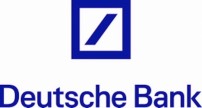LEAD LME
CONTRACT SPECIFICATION
| Trading Screen Product Name | Lead LME | |
| Commodity Code | LEDZ / PBD | |
| Contract Size | 25 tons / lot (± 2%) | |
| Price Quotation | USD / ton | |
| Contract Type | 3-month | |
| Contract Series | Daily | |
| Trading Hours | Monday - Friday 08:00 A.M- 02:00 A.M (the next day) |
|
| Minimum Price Fluctuation | 0.50 USD / ton | |
| First Notice Day | Out to 3 months | |
| Last Trading Day | Up until the close of the first Ring the day before the prompt date | |
| Margin | As MXV required | |
| Position Limit | As MXV required | |
| Price Limit |
|
|
| Settlement Method | Deliverable | |
| Quality Standards | Standards are detailed below |
QUALITY STANDARDS
In accordance with the regulations of Lead traded on London Metals Exchange (LME).
1. Refined lead with a minimum purity of 99.970% must meet one of the following criterias:
a. Standard BS EN 12659:1999 for "Lead and Lead-Lead Alloys": Material number PB970R, PB985R and PB990R
b. Standard GB/T 469/2013 for "Lead ingots": 99.970%, 99.985%, 99.990% and 99.994%
c. Standard ASTM B29-03 (2014) for “Refined Lead”: 99.97% and 99.995%.
2. In the shape of ingots weighing not more than 55 kilos.
3. Of brands listed in the LME approved list.
Standard BS EN 12659:1999 for "Lead and Lead-Lead Alloys"
|
Element |
Composition (%) |
|||
|
Lead |
99.970 for PB970R |
99.985 for PB985R |
99.990 for PB990R |
Minimum |
|
Silver |
0.0050 |
0.0025 |
0.0015 |
Maximum |
|
Asen |
0.0010 |
0.0005 |
0.0005 |
|
|
Bitmut |
0.030 |
0.0150 |
0.0100 |
|
|
Cadimi |
0.0010 |
0.0002 |
0.0002 |
|
|
Copper |
0.0030 |
0.0010 |
0.0005 |
|
|
Niken |
0.0010 |
0.0005 |
0.0002 |
|
|
Antimon |
0.0010 |
0.0005 |
0.0005 |
|
|
Tin |
0.0010 |
0.0005 |
0.0005 |
|
|
Zinc |
0.0005 |
0.0002 |
0.0002 |
|
|
Total |
0.030 |
0.015 |
0.010 |
|
Standard GB/T 469-2013 for “Lead ingots”
|
Element |
Composition (%) |
||||
|
Lead |
99.970 for Pb99.970 |
99.985 for Pb99.985 |
99.990 for Pb99.990 |
99.994 for Pb99.994 |
Minimum |
|
Silver |
0.0050 |
0.0025 |
0.0015 |
0.0008 |
Maximum |
|
Asen |
0.0010 |
0.0005 |
0.0005 |
0.0005 |
|
|
Bitmut |
0.030 |
0.0150 |
0.0100 |
0.004 |
|
|
Cadimi |
0.0010 |
0.0002 |
0.0002 |
0.0002 |
|
|
Copper |
0.0030 |
0.0010 |
0.0005 |
0.001 |
|
|
Ferrous |
0.0020 |
0.0010 |
0.0010 |
0.0005 |
|
|
Niken |
0.0010 |
0.0005 |
0.0002 |
0.0002 |
|
|
Antimon |
0.0010 |
0.0005 |
0.0005 |
0.0007 |
|
|
Tin |
0.0010 |
0.0005 |
0.0005 |
0.0005 |
|
|
Zinc |
0.0005 |
0.0002 |
0.0002 |
0.0004 |
|
|
Total |
0.030 |
0.015 |
0.010 |
0.006 |
|
Standard ASTM B29-03 (2014) for “Refined Lead”
|
Element |
Composition (%) |
||
|
Lead |
99.97 for UNS No.L50021 |
99.995 UNS No.L50006 |
Minimum |
|
Refined Lead |
Less Bitmut Less silver Refined Lead |
Maximum |
|
|
Silver |
0.0075 |
0.0010 |
|
|
Allunium |
0.0005 |
||
|
Asen |
0.0005 |
0.0005 |
|
|
Bitmut |
0.025 |
0.0015 |
|
|
Cadimi |
0.0005 |
||
|
Copper |
0.0010 |
0.0010 |
|
|
Ferrous |
0.001 |
0.0002 |
|
|
Niken |
0.0002 |
0.0002 |
|
|
Sulfur |
0.001 |
||
|
Antimon |
0.0005 |
0.0005 |
|
|
Selen |
0.0005 |
||
|
Tin |
0.0005 |
0.0005 |
|
|
Telu |
0.0002 |
0.0001 |
|
|
Zinc |
0.001 |
0.0005 |
|
Product infomation
Introduce
Lead is a chemical element in the periodic table abbreviated as Pb (Latin: Plumbum) and has the atomic number 82. Lead has a common valence of II, sometimes IV. Lead is a soft, heavy, toxic and formable metal. Lead is bluish-white when freshly cut but begins to tarnish to gray when exposed to air. Lead is used in construction, lead batteries, ammunition, and is part of many alloys. Lead has the highest prime number of the stable elements.
Characteristics
Lead is silvery white and bright, its fresh cut surface slag rapidly in the air giving it a dark color. It is a bluish-white metal that is very soft, malleable and heavy, and has poor electrical conductivity compared to other metals. Lead is highly resistant to corrosion, and because of this property, it is used to contain corrosive substances (such as sulfuric acid). Because of its malleability and corrosion resistance, it is used in construction works such as in roofing sheets. Metallic lead can be hardened by adding small amounts of antimony, or small amounts of other metals such as calcium.
Lead powder burns to a bluish-white flame. Like many metals, very fine lead sets are capable of spontaneous combustion in air.[6] Toxic fumes are emitted when lead burns.
Application
- Lead is the main component of batteries used in vehicles.
- Lead is used as a white pigment in paints.
- Lead is used as a coloring ingredient in enamels, especially in red and yellow colors.
- Lead is used as a barrier to prevent nuclear radiation.
- Lead is commonly used in PVC.
Manufacturing












